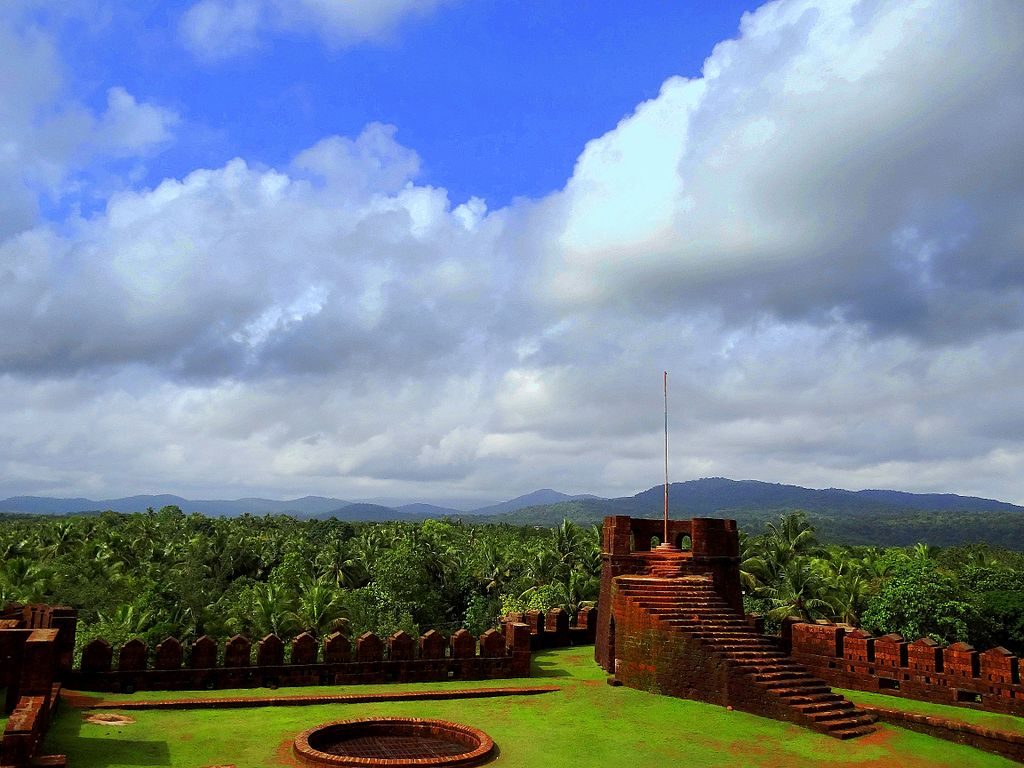Car enthusiasts will probably recognize the Bonneville Salt Flats of Utah. For almost a hundred years, motorists and petrolheads have used the salt flats to set various Land Speed Records. But the salt flats are more than just a larger than life racetrack. They are stunning in their own right and really really huge, covering an area of 100 square kilometers.
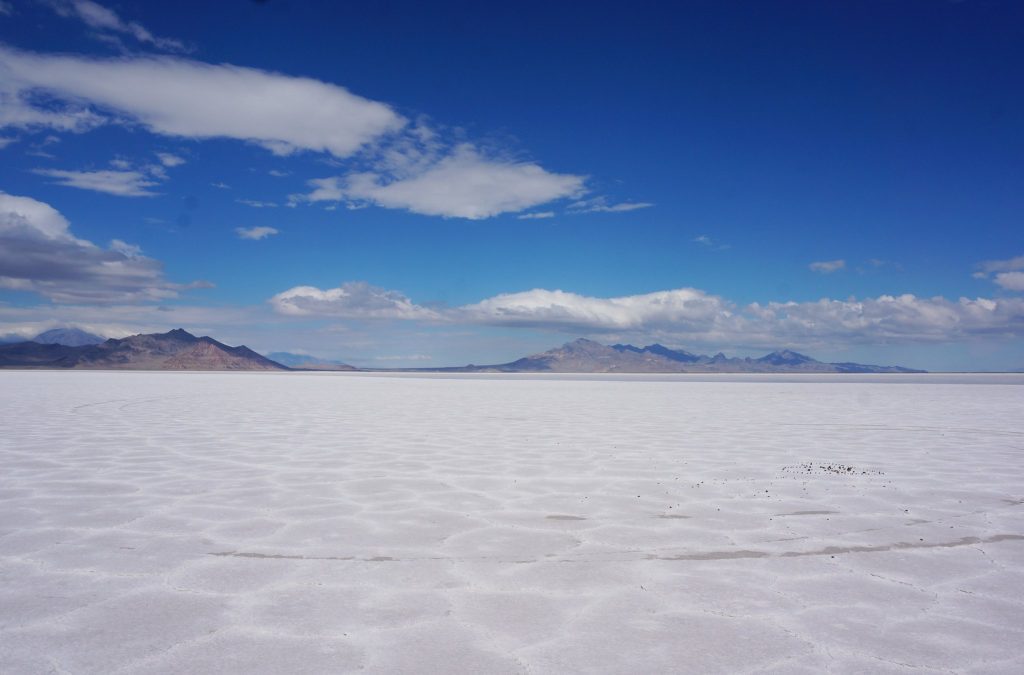
Apart from their significance in American pop culture (‘Tree of Life’, a movie by the legendary Terence Malik was shot here), the Bonneville Salt Flats also afford a unique experience. Whether it is the endless expanse of white or the crystal clear Great Salt Lake that borders the flats, the place will make you, the visitor, ‘feel’ a certain way. The crunch of the ground, the blinding white that offers no relief or contrast, the smell of salt in the air, all come together to make this place unique and inimitable. Not quite. There are many many salt flats all over the world. Each, without doubt, is unique, but these flats also share certain fundamental features.
India is home to an incredible salt pan as well- The Rann of Kutch. It is superficial to say that one can visit the Rann of Kutch instead of the Bonneville flats because the experience the two places afford can never be identical. However, we can say with certainty, if it is salt flats you wish to see, then Rann of Kutch is a damn good contender. It may not be as storied as its counterpart in Utah, but it still has a lot going for it; more on this below.
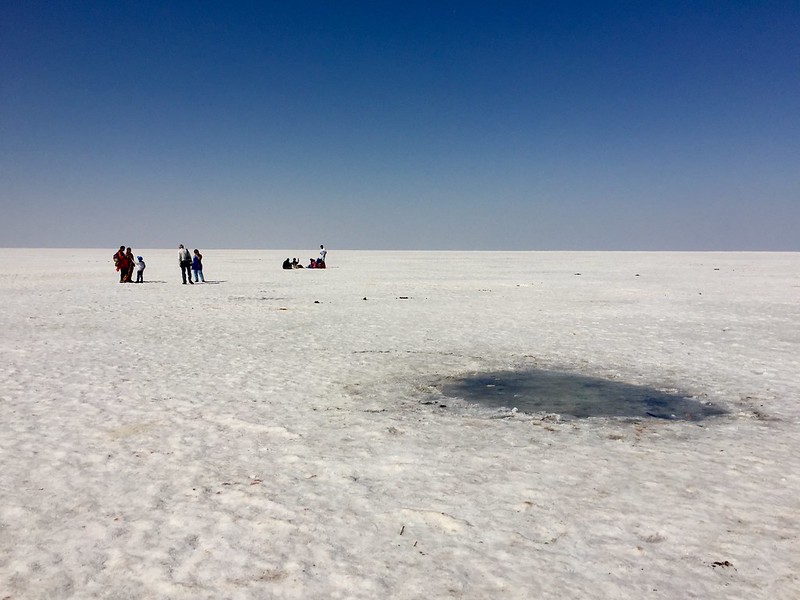
The Prehistoric Salt Flats of Utah
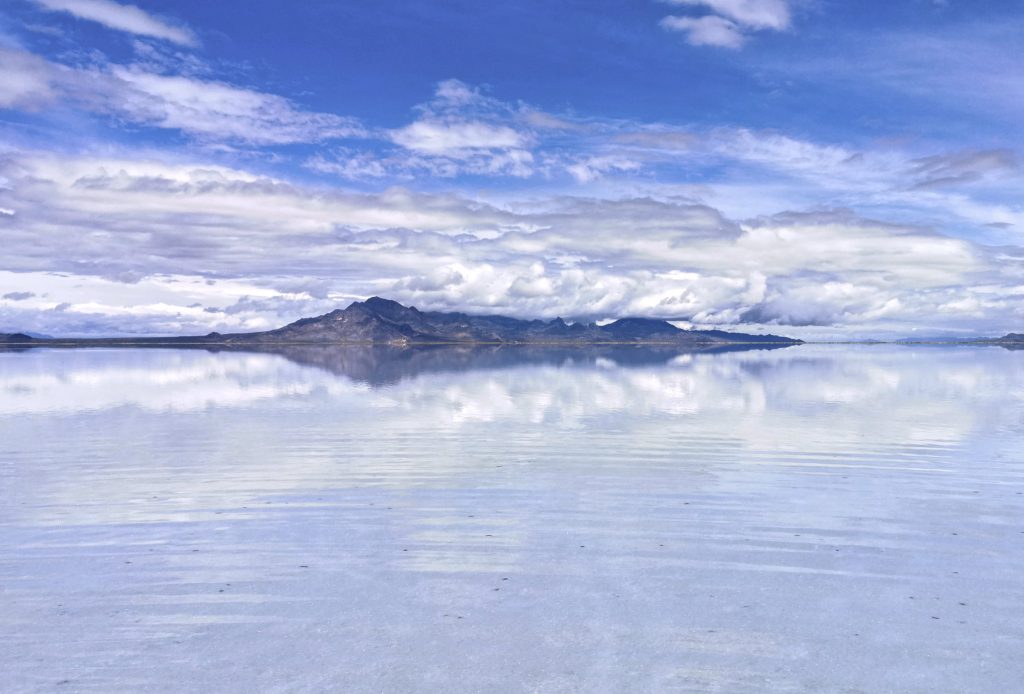
Now an inhospitable desert stretch with absolutely no vegetation, Boneville was actually a lakebed some 3,000 years ago. When the lake dried out, it left behind large deposits of salt. In summers, the temperatures go as high as 37-degree Celsius (which is considered pleasant weather in India), and if you happen to visit this place in the winters, a very thin layer of water accumulates on the surface creating an illusion of a giant mirror reflecting light all around.
Rann of Kutch
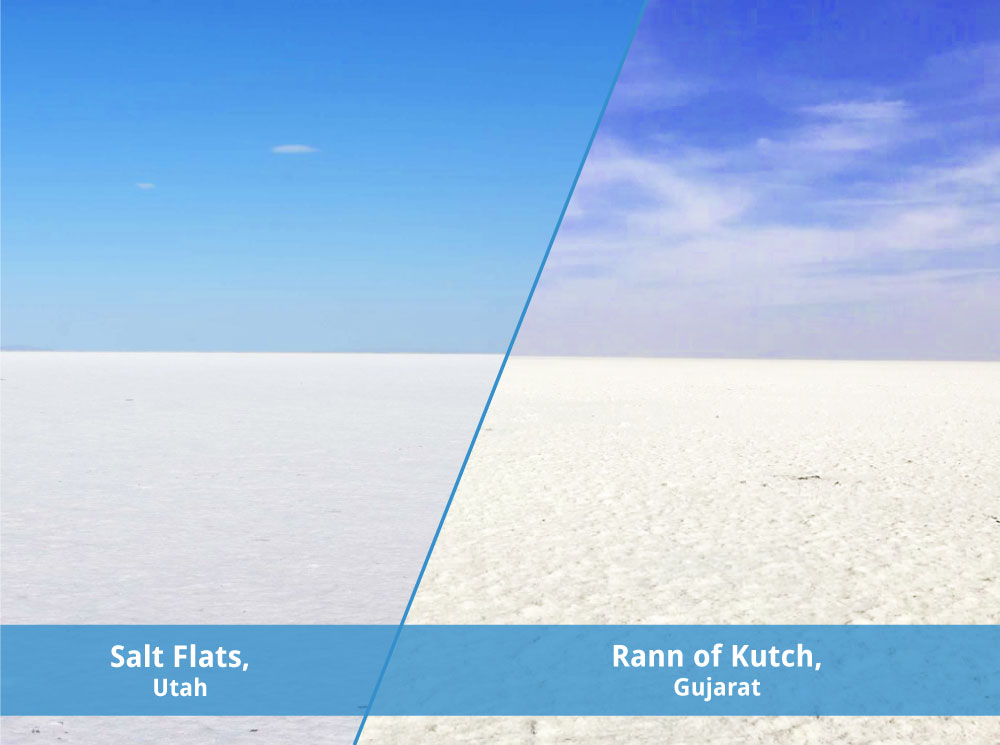
Kutch, on the other hand, is of another scale. The Great Rann of Kutch is an incredible 7,500 Sq. Km. Not all of it consists of salt plains – diverse ecologies, marshes, mangroves and wildlife also thrive here. Walking on the salt desert feels like walking towards “nothing”. There is absolutely nothing to interrupt your vision. There are no mountains, no lakes – just an endless white space vanishing into the horizon.
‘Space’ takes on a new meaning in the middle of the salt deserts of Kutch when the only sound keeping you company is the sound of hard crystalline salt rubbing against the soles of your shoes!
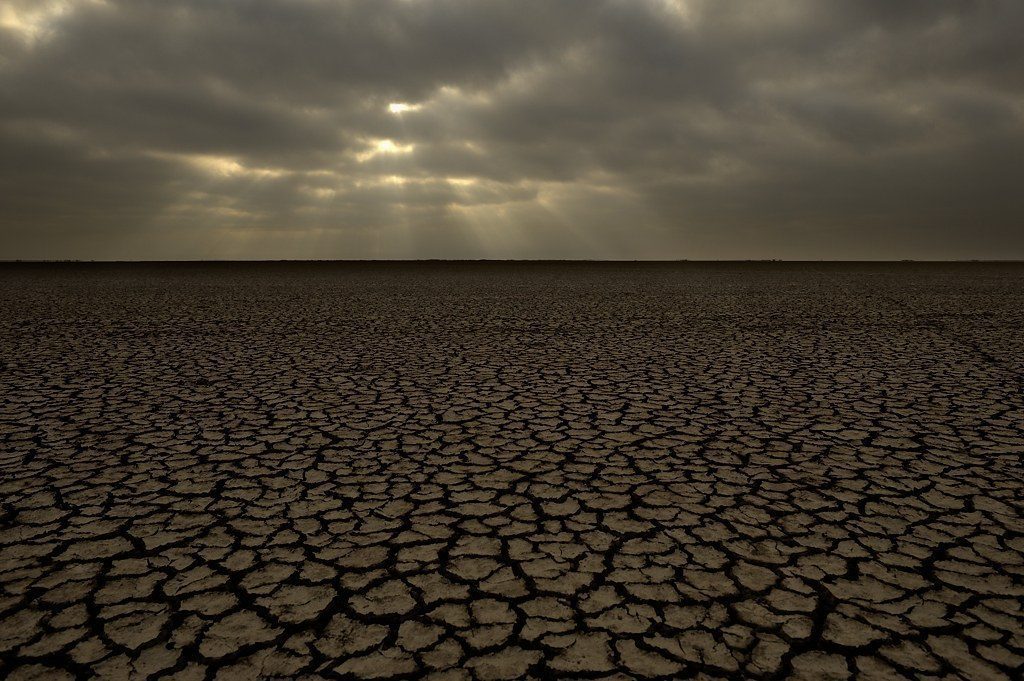
If you have visited the Kutch desert before, chances are you are aware of the shifting dangers of the mirage. Sometimes it feels like being stranded on an island, and the other times, like you are stuck in a cloud.
The history of “nothingness”
The story of the formation of India’s salt desert is similar to that of Bonneville, except every monsoon, the place gets flooded and dries out when the rains die. There is a certain ‘desi’ current here, a vibe so strong that you invariably end up saying “our very own salt flats”.
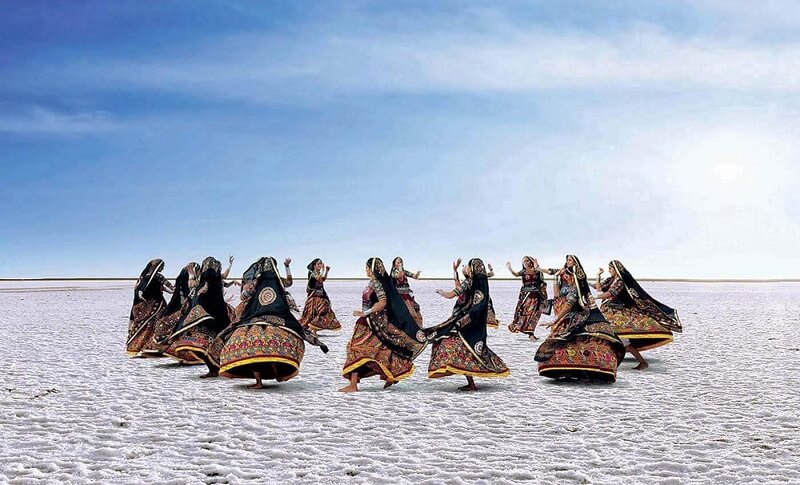
A visit to the Rann in the morning is like walking into the blank white canvas of a painter who is probably waiting for the evening to fall, so he can start incorporating hues of pink, orange, purple and red.
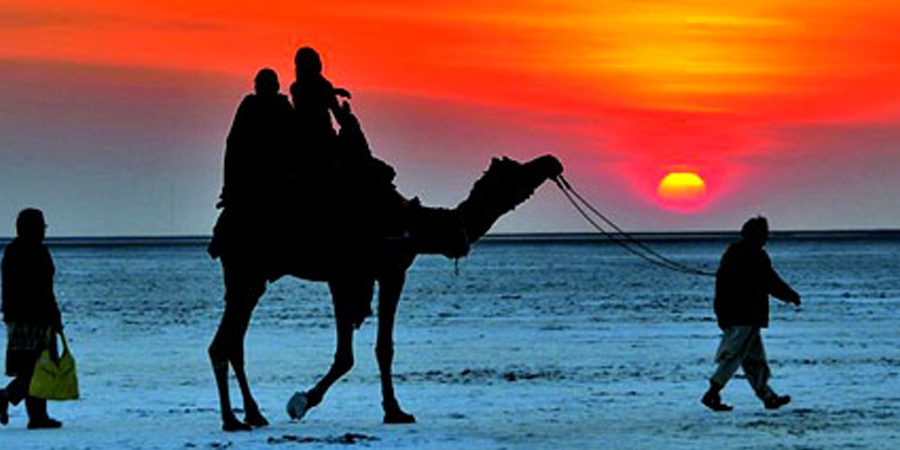
We recommend you visit Kutch during the Rann Utsav– a number of incidental distractions will make the trip worthwhile. The festival features a number of folk performances, singing, dancing and much much more, though, camping in the middle of a salt desert under starry sky has to be the most compelling reason.
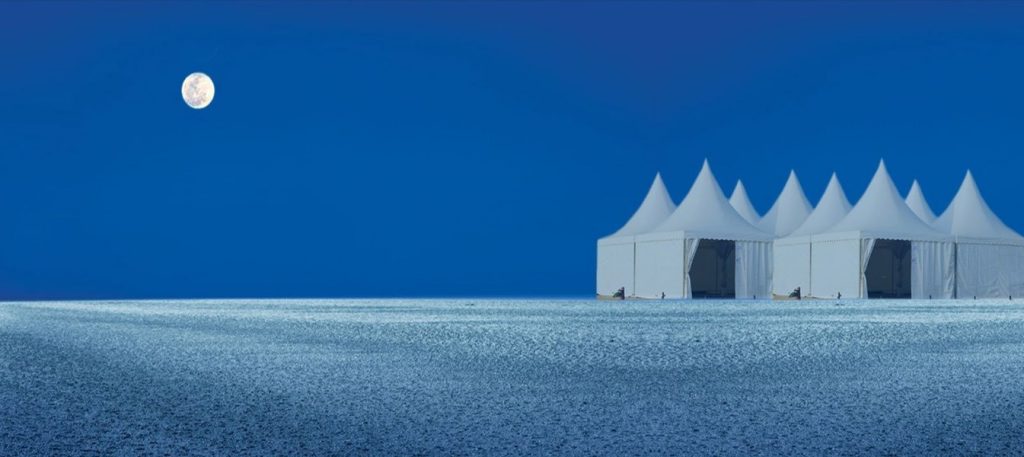
Things to keep in mind
- Sunrise and sunsets are the only times visitors are allowed to enter the salt desert. Remember, Kutch is not a place where you could simply walk into for a vacation. You need special permission from the BSF.
- Give yourself a major dose of “nothingness” by heading to the watchtower at the far end of the road that takes you to Rann of Kutch.
- Appreciate the handicrafts here and shop as much as you can to support the livelihood of the locals.
- Camp near the desert for the real taste of bedouin life, of course, minus all the hardships. The camps here are well-equipped with modern amenities to make your stay as comfortable as possible while at the same time not robbing you of the joy of living in the middle of nowhere.
- Full moon nights are the most popular here, so plan your trip accordingly.
- There is a lot more to Kutch than just the white desert. So take some time out to try other experiences in Kutch.
Last Updated on March 1, 2023 by blogadmin


